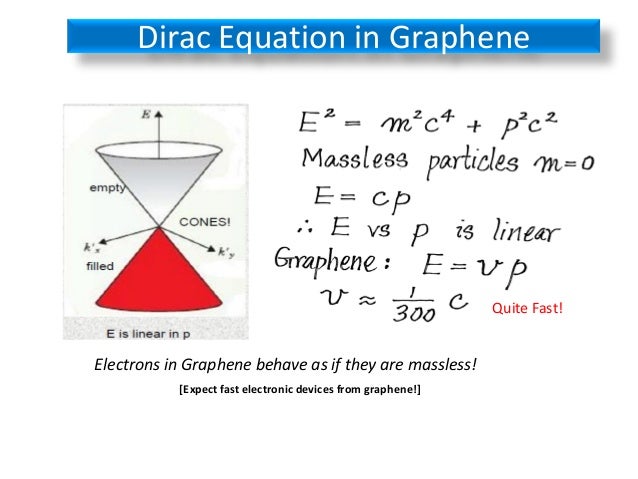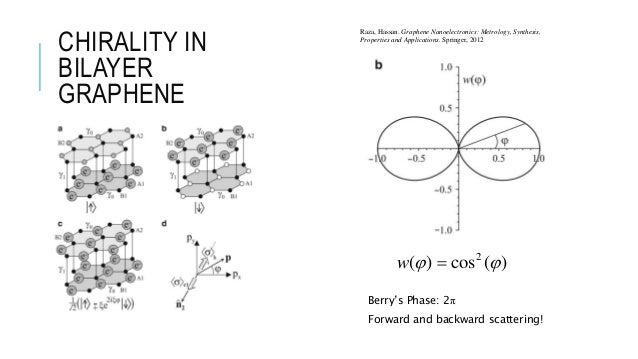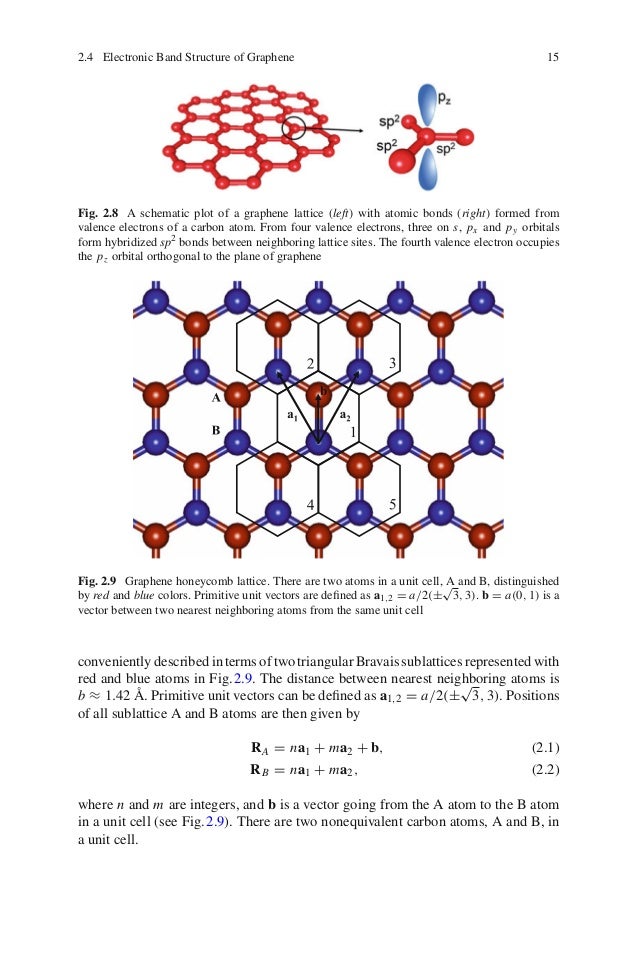He uses the Moebius Strip - and then says the electron has to travel around "twice" - since it is Spin 1/2 - yes but what he doesn't explain in the Harvard Lecture - he makes up for in a different slide lecture. So I had to dig on my own to find a different lecture by him - just to get a better explanation!!
So in the above image - it is made very clear - the 1/2 spin is in the two opposite directions AT THE SAME TIME. It's not that the electron has to travel around twice - as that wrongly implies time as a distance. What he is trying to do is convert the spin 1/2 or 1/2 quanta back into the symmetric math. haha.
Now what makes the momentum stay in the same direction - when in normal quantum physics it would be canceled out? Because of how the carbon bonds together - the relation within each atom is shifted 90 degrees to its relation in the bonded atom.
So because it is spin 1/2 and effectively "massless" this means it is a meta-material conductor - whereby the wavelength is zero dimension as quantum tunneling and so instead you have future time and past time in the same zero space as the 4th dimension of space that is "time-like" or as noncommutative phase. And so you have frequency-momentum and then you have reverse time and superluminal momentum due to the relativistic quantum "Law of PHase Harmony." Frequency is directly proportional to momentum but due to the spin 1/2 then the mass of the electron is canceled out and you get just pure momentum even though the time is reversed or inversely proportional to the frequency. Frequency is to Time as Momentum is to Wavelength so the wavelength converts to reverse time and cancels out into "zero time" with positive momentum x frequency.
This is described in the Bilayer Graphene as T=0 due to electron coupling with the "evanescent hole" meaning the superluminal momentum. Whereas in the single atomic layer graphene the electron is as T=1 since the electron spin couples with no phase shift, as just the "hole" spin with no positive momentum and the charge is produced from an effective "massless" electron.
So normally changing the "charge" would cancel out the momentum but because of the 90 degree phase coherence the charge is not from the mass but instead from the spin 1/2 or as massless charge, conversion from the photon.
I have to combine images from different slide lectures - to clarify what is going on.
A Weyl fermion is a massless spin-1/2 particle whose antiparticle has the opposite chirality, or “handedness.” Weyl fermions have a close relationship to Dirac fermions: a Dirac fermion can be viewed as two superimposed Weyl fermions of opposite chirality that do not mix, because there are crystalline symmetry constraints.So Bilayer Graphene behaves as Spin 1 even though the chirality is still spin 1/2 due to the 90 degree symmetry shift or noncommutative phase. This is called "Phase Shifted Transmission Resonances"
‘phononic’ aspects of two-dimensionality in graphene are still very poorly understood.
So the fact that a 2 dimensional atomic crystal can be created is only due to amplitude "ripples" or phonon oscillations - this is the spin 1/2 oscillation.
amplitudes of atomic vibration u near their equilibrium position are much smaller than interatomic distances d, otherwise the crystal would melt.... successfully described using a picture of an ideal gas of phonons, i.e. quanta of atomic displacement waves (harmonic approximation)....this can be described only as an internal degree of freedom of the charge carriers, which is just the chirality.So this is the 5th Dimension in action as noncommutative phase, based on quantum tunnelling of the electron spin. So we have charge but with zero energy as amplitude!
Since the electron wave function is a two-component spinor, it has to change sign when the electron moves along a closed contour. Thus, the wave function gains an additional phase f = p [degree of freedom]. In quasiclassical terms (see34,42, for example), stationary states are nothing but electron standing waves and they can exist if the electron orbit is, at least, half the wavelength. As a result of the additional phase shift by the Berry phase, this condition is already satisfied for the zeroth length of the orbit, that is, for zero energy!This is precisely the same concept as from music theory - you have the octave as 2 (half the wavelength) but the 3 is noncommutative phase at the same time or "zero" time since the octave is the same "pitch" as the "standing wave" or zero mass (zero energy). In other words it is at "zero length of the orbit" because it is as 1 time with no wavelength and then the frequency doubles as charge due to the phase change - the pitch stays the same as a "standing wave" (or root tonic or fundamental pitch) with the frequency inverse to the time as 2/3 and 3/2.
Graphene - Tedx - 2 dimensional
This is what I meant by Philip Kim not being clear - because he was still using a Classical explanation of the quantum nonlocal noncommutative phase! But in the book he calls it a "topological singularity" as a phase shift
No wonder Kim kept saying he got "scooped" - and that he shares the Nobel Prize - the scoopers got the Nobel Prize for this discovery of 2 dimensional graphene as relativistic quantum massless electron charge.





No comments:
Post a Comment